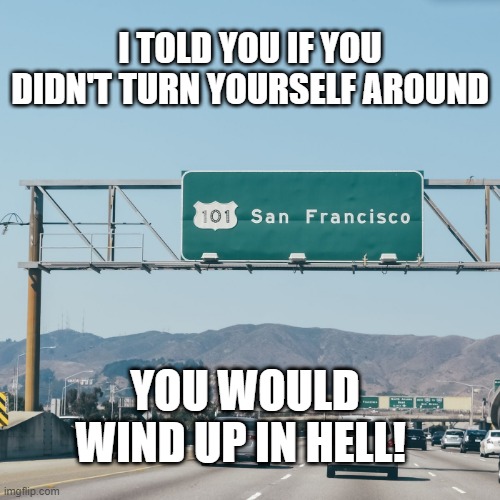Notice the photo in this article. It is a limited car street—a VERY narrow street. But government buses are planning are creating total gridlock—and no guarantee anybody will use the disease and crime ridden buses. San Fran is working hard to destroy what is left of the city—no cars, walk or bike to work and government buses. New construction is town for housing units mostly do not require ANY parking spaces—but do demand bike racks. Obviously not a family friendly community.
“Although 26 residential roadways citywide have been closed to vehicular thru-traffic in order to create space for socially distant multi-modal travel as well as outdoor recreation since April 2020, the vast majority have been placed in higher income areas.
Meanwhile, the neighborhoods that are home to some of The City’s highest concentrations of essential workers and low-income residents and where crowded housing and transportation conditions persist during the pandemic have been left out of the program.
When pushed on this clear equity issue, SFMTA emphasized that the implementation of Slow Streets created earlier in the pandemic was largely driven by residents who had participated in previous surveys and recommended partial closure of streets in their neighborhoods.”
This is a city that makes it hard for families, small businesses—no cars usually means very limited customer base. Add to this the crime wave hitting the city that defunded a large portion of the budget for cops—you have to be high on drugs to want to stay—or financially unable to leave the crumbling city.
SFMTA board to vote on nine new Slow Streets in ‘historically underserved’ neighborhoods

Agency says recommendations result from targeted, community-level outreach
Carly Graf, SF Examiner, 4/5/21
The San Francisco Municipal Transportation Agency Board of Directors will vote Tuesday on whether to add nine new corridors to the Slow Streets system that, if approved, would bring the temporary traffic calming treatments to “historically underserved” neighborhoods.
Although 26 residential roadways citywide have been closed to vehicular thru-traffic in order to create space for socially distant multi-modal travel as well as outdoor recreation since April 2020, the vast majority have been placed in higher income areas.
Meanwhile, the neighborhoods that are home to some of The City’s highest concentrations of essential workers and low-income residents and where crowded housing and transportation conditions persist during the pandemic have been left out of the program.
When pushed on this clear equity issue, SFMTA emphasized that the implementation of Slow Streets created earlier in the pandemic was largely driven by residents who had participated in previous surveys and recommended partial closure of streets in their neighborhoods.
However, the agency also recognized this approach had led to the disproportionate influence of areas towards the center of The City where a high concentration of survey respondents reside, and it was incumbent on SFMTA itself to seek out input from neighborhoods farther afield.
Last November, SFMTA announced it would set out to rectify this problem by beginning work on a new wave of Slow Streets, the program’s fourth, with focused outreach in 10 areas: SoMa, Bayview, Visitacion Valley, Outer Mission, Oceanview/Parkside, Inner Sunset and the Western Addition.
The board will now vote on the nine finalists staff members have identified as a result of extensive community engagement between November 10 and December 14 of last year.
SFMTA hosted four virtual events and three neighborhood events, sent out postcards, posted flyers along proposed corridors, worked with supervisors, community groups and merchant associations and distributed neighborhood-specific surveys that yielded 1,278 responses.
Residents of SoMa, Western Addition and the Bayview voiced the strongest support, with 96, 88 and 87 percent of survey respondents saying they’d be in favor of rolling out Slow Streets in their respective neighborhoods.
Should the board approve this suite of Slow Streets, implementation will start as soon as this spring with temporary delineators to mark closure to thru-traffic. Exact timing is contingent upon the availability of materials later this month.
As is the case with all Slow Streets, the partial closure of these nine corridors would sunset 120 days after the emergency order is lifted, barring any action from the board to make them permanent.
Right now, SFMTA is surveying residents, collecting traffic data and monitoring operational issues on existing Slow Streets to determine which of them it might propose for permanence.
Agency leadership has already announced that versions of Page, Sanchez and Shotwell streets will be put in front of the board for approval to be made permanent later this spring.



